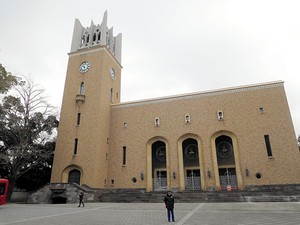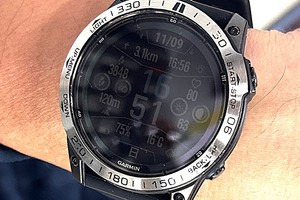By TATSURO SAKATA/ Staff Writer
July 10, 2023 at 07:00 JST
YAMAGATA--Deep learning technology using artificial intelligence has helped Yamagata University identify new Nasca geoglyphs in Peru, the school said.
The university is the only group in the world that has received permission from the Peruvian government to conduct scientific research on artifacts at the UNESCO World Heritage site.
A research team led by Masato Sakai, a professor of cultural anthropology and Andean archaeology at the university, has discovered 358 geoglyphs since 2004.
The deep learning method, which involves an AI system that trains itself, has helped to identify four of them, team members said June 1.
Yamagata University used AI-assisted deep learning in a feasibility study, conducted jointly with IBM Japan Ltd., in the northern part of the Nasca Pampa between 2018 and 2021.
The researchers previously looked for candidate geoglyphs in aerial photographs before visiting the sites on foot to identify them.
But that approach was time-consuming. The Nasca Pampa--about 20 kilometers from east to west and 15 km from north to south--is around half the size of Tokyo’s 23 wards.
To speed up the search, they fed image data into an AI system and had it detect potential geoglyphs in aerial photos.
The scarcity of available training data, however, posed an obstacle.
“Ideally, thousands of data sets should have been used as training data, but only 21 geoglyphs were available for use in the northern part of the Nasca Pampa,” Sakai said.
All geoglyphs are “unique.” None of the geoglyphs yet to be discovered is expected to have the same design as any known ones.
The researchers divided the geoglyphs into simpler elements, such as animal legs and tails, for use as training data, believing the pictorial features would also be contained in new geoglyphs.
They used this and other approaches to increase the quantity of training data to more than 300 sets.
Through this method, the AI system presented candidates for geoglyphs. The researchers visited the selected sites and confirmed that four of them are new geoglyphs.
The researchers released photos of three new geoglyphs--possibly a pair of legs 78 meters long, a 19-meter-long putative fish, and the presumed image of a bird that is 17 meters long.
“We would have been at our wit’s end had it not been for the AI-based method,” Sakai said. “The technology, which can show us where to go, is advancing at such an accelerated pace that a study that would previously have taken more than 20 years to finish now takes only a year.”
The professor added: “A total of 1,000 or so geoglyphs could be found. We will probably even get to know why and for what purpose they were made.”
The research results were published in the Journal of Archaeological Science, an international academic journal (https://www.sciencedirect.com/science/article/pii/S0305440323000559).




















A peek through the music industry’s curtain at the producers who harnessed social media to help their idols go global.
A series based on diplomatic documents declassified by Japan’s Foreign Ministry
Here is a collection of first-hand accounts by “hibakusha” atomic bomb survivors.
Cooking experts, chefs and others involved in the field of food introduce their special recipes intertwined with their paths in life.
A series about Japanese-Americans and their memories of World War II